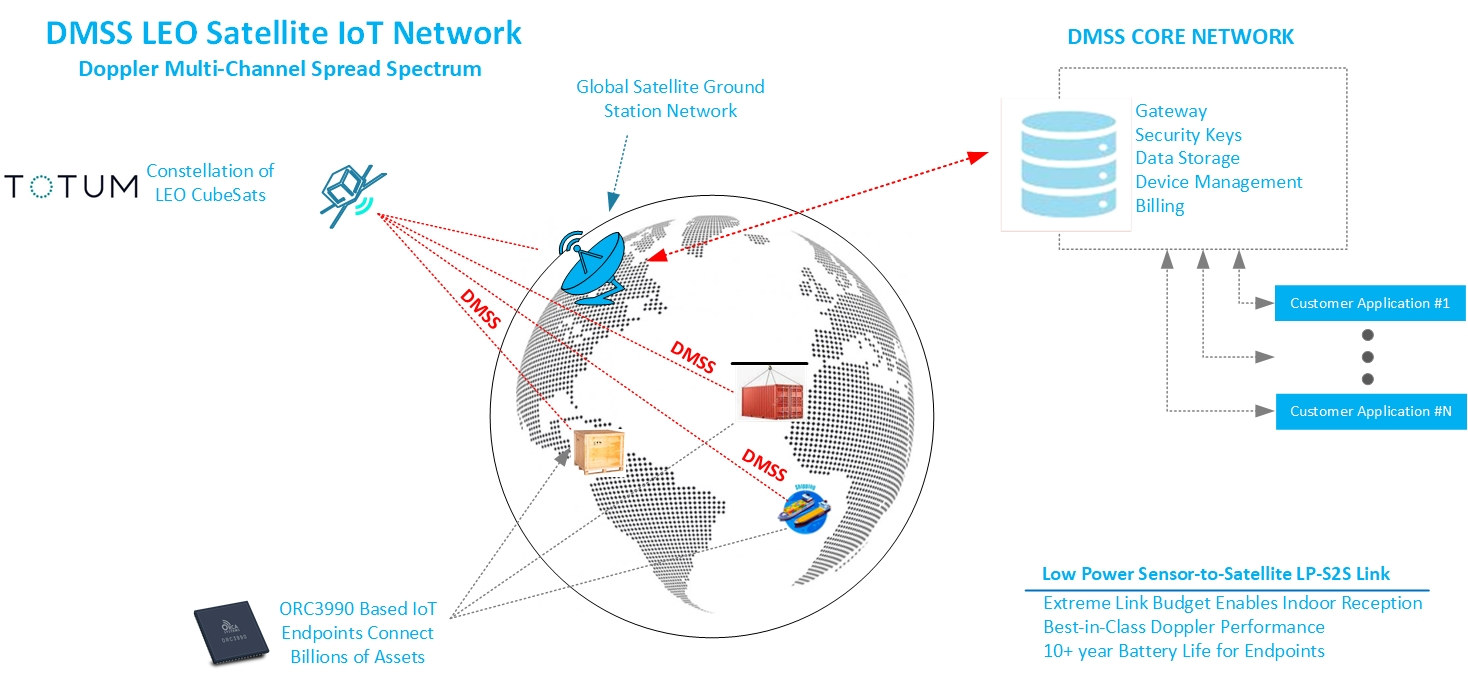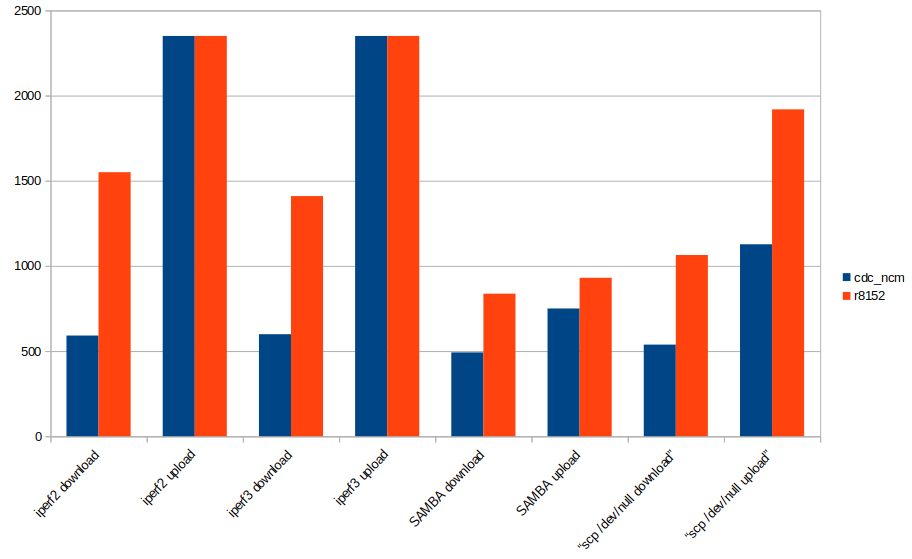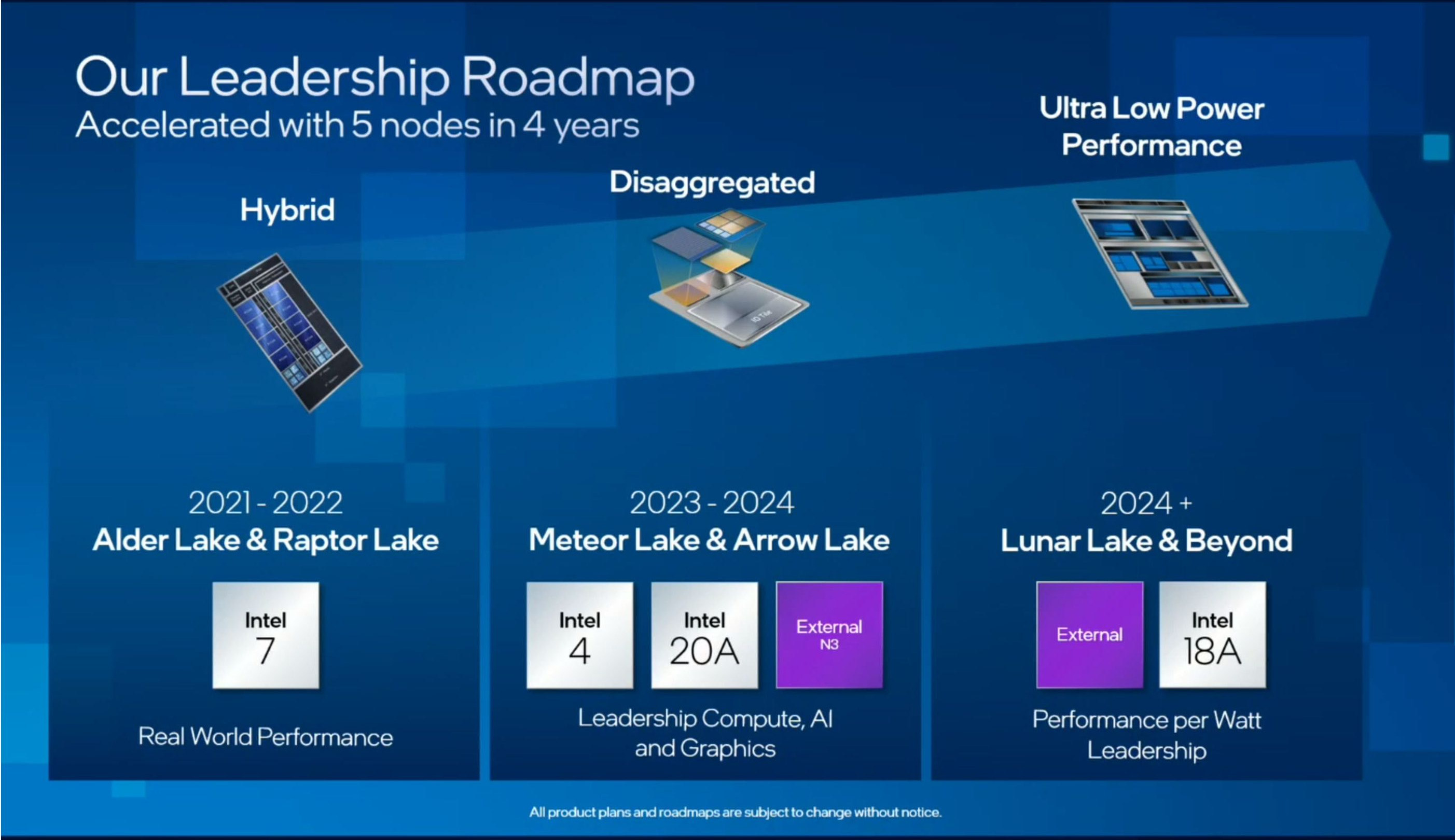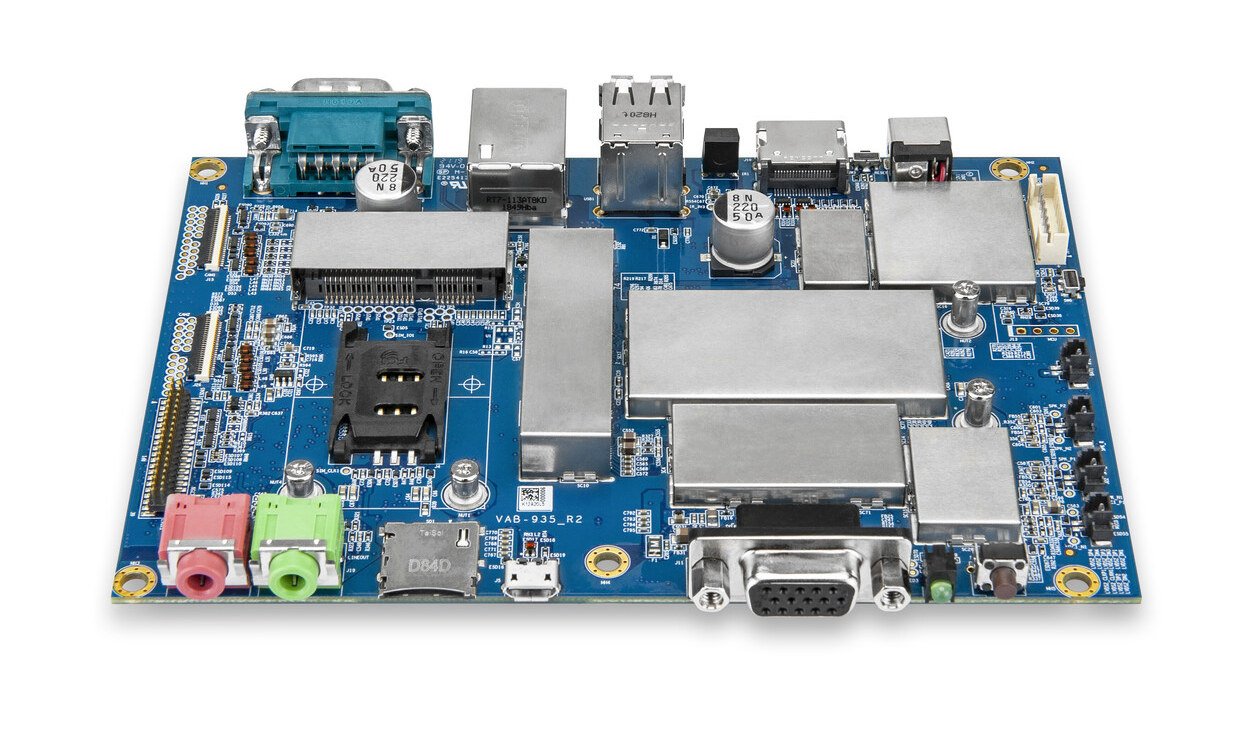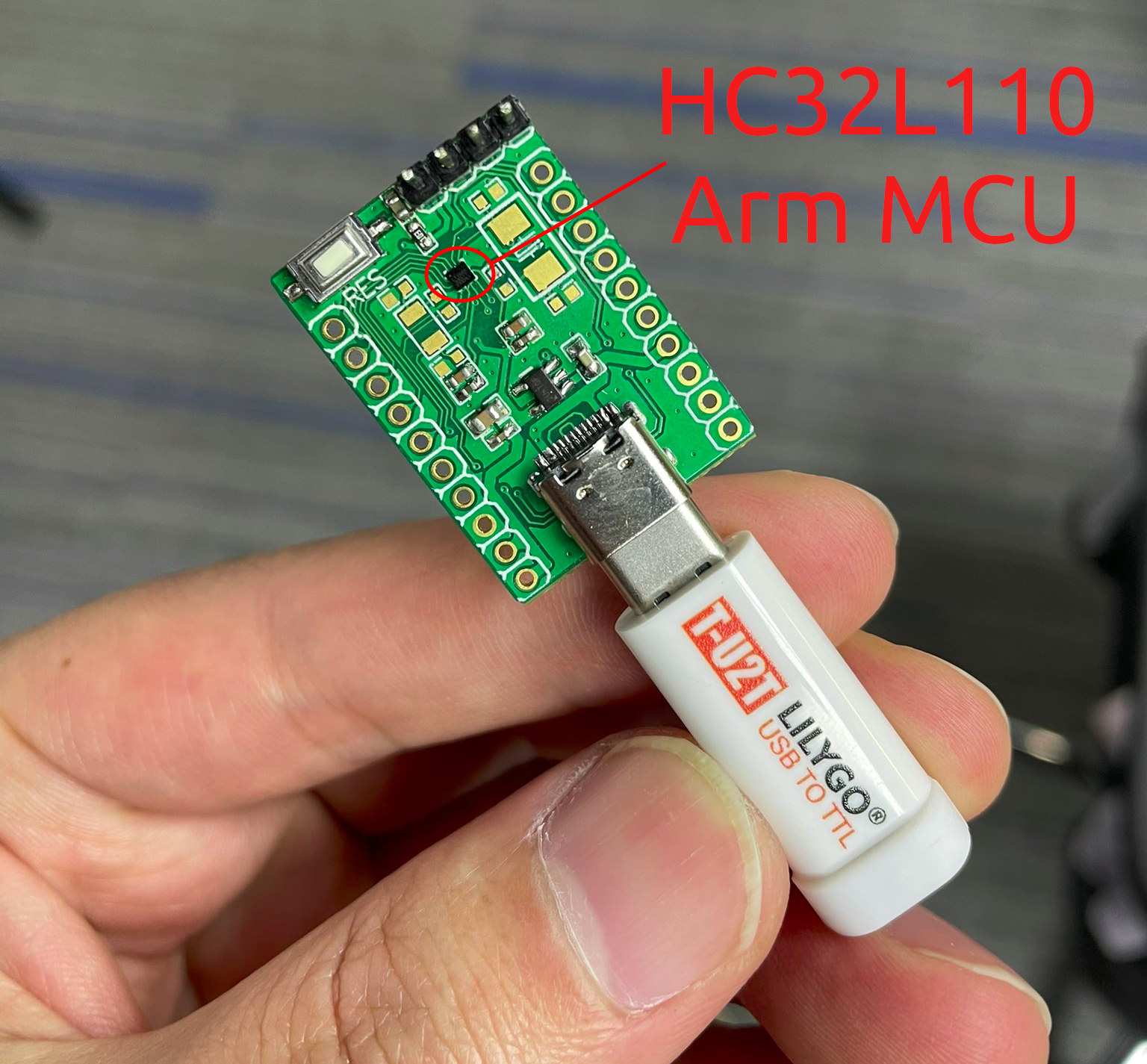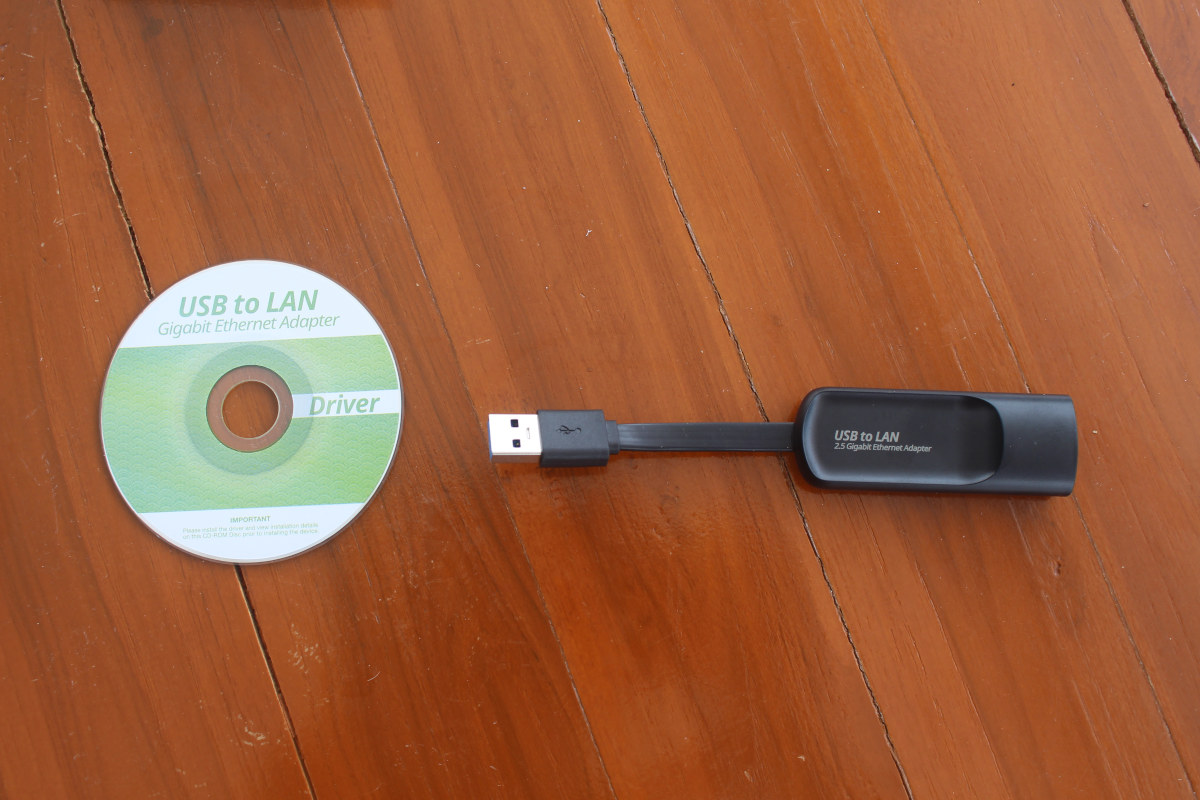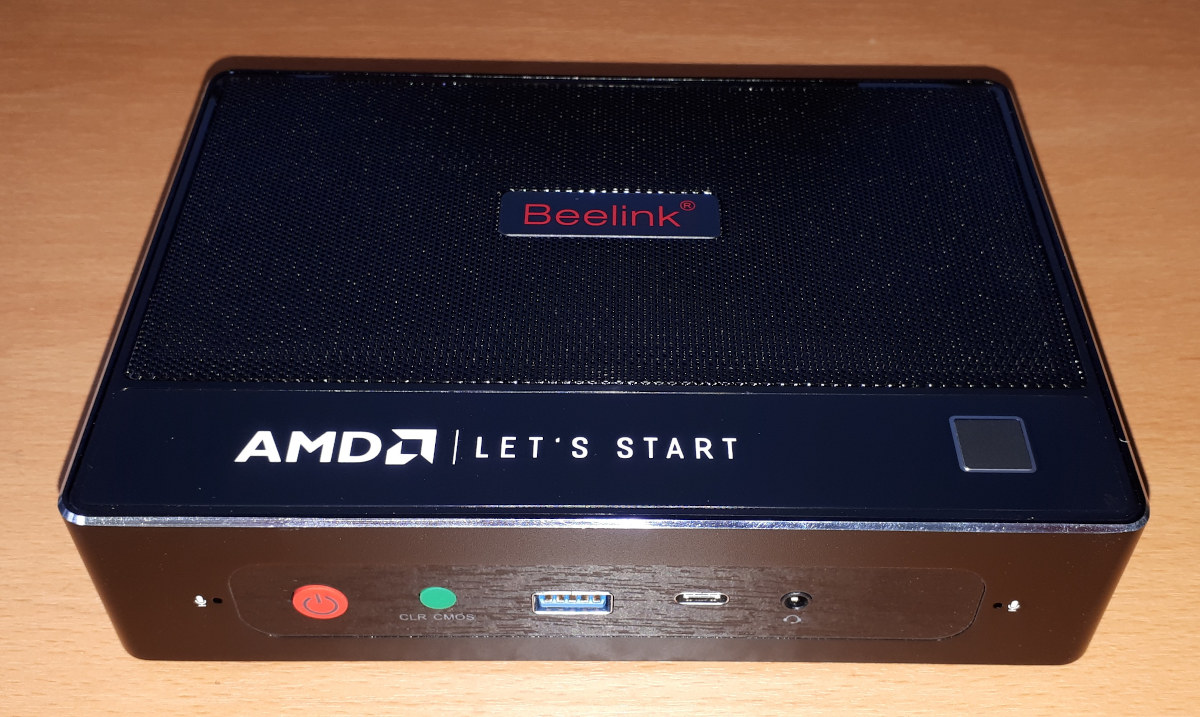Orca Systems ORC3990 is a low-power satellite Internet of Things (IoT) SoC that works with Totum’s Low Earth Orbit (LEO) network of satellites and targets outdoor and indoor tracking and monitoring applications. It’s not the first time we read about satellites being used for LPWAN networks, as Sigfox launched LEO satellites a few years ago to provide worldwide coverage even in remote locations like the Sahara desert, the two poles, and oceans. But I had never heard of Totum or Orca Systems before, so let’s have a closer look. Orca Systems ORC3990 ORC3990 specifications: Unnamed Arm cores Integrated RF Transceiver Low Power Sensor-to-Satellite (LP-S2S) connectivity in the 2.4 GHz ISM band Totum DMSS modem for improved doppler performance Link budget enables indoor signal coverage Support location fixes with 20m accuracy Low power – 10+ year battery life Package – 7x7mm QFN chip Temperature Range – -40 – +85°C Process – […]
Fixing performance issues with Realtek RTL8156B 2.5GbE USB dongle in Ubuntu
A few days ago, I reviewed a USB 3.0 to 2.5 Gbps Ethernet adapter based on Realtek RTL8156B chip in Ubuntu 20.04, and let’s say the reliability and performance were underwhelming. I got some recommendations like changing cables, the MTU size, etc… Playing around with cables did no help, but one comment mentioned the cdc_ncm driver could be the issue, followed by another saying that updating to Linux kernel 5.14 should install the correct r8152 driver… So I just did that:
|
1 |
sudo apt install linux-oem-20.04d |
This upgraded Linux 5.13 (shipped with Ubuntu 20.04 + HWE) to Linux 5.14, but still no luck as the system kept using the cdc_ncm driver with a half-duplex link:
|
1 2 3 4 5 6 7 8 9 10 11 12 13 |
jaufranc@cnx-laptop-4:~$ inxi -n Network: Device-1: Realtek RTL8111/8168/8411 PCI Express Gigabit Ethernet driver: r8169 IF: enp2s0f1 state: down mac: 98:28:a6:0f:06:07 Device-2: Qualcomm Atheros QCA9377 802.11ac Wireless Network Adapter driver: ath10k_pci IF: wlp3s0 state: up mac: 70:c9:4e:b7:84:77 Device-3: Realtek USB 10/100/1G/2.5G LAN type: USB driver: cdc_ncm IF: enx1cbfced40321 state: up speed: 2500 Mbps duplex: half mac: 1c:bf:ce:d4:03:21 jaufranc@cnx-laptop-4:~$ uname -a Linux cnx-laptop-4 5.14.0-1022-oem #24-Ubuntu SMP Mon Jan 31 16:00:31 UTC 2022 x86_64 x86_64 x86_64 GNU/Linux |
But then I thought I may have to use udev rules to prevent loading the cdc_ncm driver, and there’s indeed 50-usb-realtek-net.rules in r8152 driver to do just that. So I copied the file in /etc/udev/rules.d/ folder. Since I […]
Intel aims to be the performance per watt leader by 2024 with Lunar Lake processors
Apple-designed Arm processors have shown it’s possible to get high-performance at relatively low power, and this has left competitors behind in that regard. But Intel aims to rectify that with the goal of becoming the “performance per watt leader” by 2024 with the new Lunar Lake processors manufactured with Intel 18A process. Intel also provided some details about families following Alder Lake processors with Raptor Lake expected later this year, Meteor Lake and Arrow Lake based on Intel 4 and 20A processes in 2023-2024 2022, and Lunar Lake expected in 2024+. Let’s have a look at what we know so far for each family. Intel Raptor Lake The Raptor Lake processors will rely on the same “Intel 7” process as Alder Lake processors, offer up to double-digit performance boost (translation: up to around 10% in specific workloads), up to 24 cores and 32-threads, better overclocking, support for AI M.2 modules […]
VIA SOM-9X35 Starter Kit features MediaTek i350 Arm processor for edge AI devices
VIA has just introduced the SOM-9X35 Starter Kit based on MediaTek i350 quad-core Cortex-A53 processor with AI accelerator and HiFi4 DSP designed for Edge AI devices in the retail, commercial, and industrial sectors. The kit is comprised of the SOM-9X35 module with MediaTek i350 SoC, up to 4GB RAM, 16GB eMMC flash, and WiFI 5 + Bluetooth 5.0 wireless module, as well as the VIA VAB-935 3.5-inch carrier board, a 7-inch 1024×600 touch panel display, a 13MP camera module, two speakers and microphone, and accompanying accessories. VIA SOM-9X35 Starter Kit specifications: SOM-9X35 System-on-Module SoC – MediaTek i350 (MT8365) quad-core Arm Cortex-A53 processor @ up to 2.0 GHz, Arm Mali-G52 MC1 up to 800Mhz with support for OpenGL ES, OpenCL, and Vulkan APIs, MediaTek APU 1.0 AI Processor up to 500MHz (285 GMACs), HiFi4 DSP System Memory – 2GB LPDDR4 SDRAM (1GB/4GB optional) Storage – 16GB eMMC flash Connectivity – MediaTek […]
HC32L110 Arm Cortex-M0+ MCU is available in a tiny 1.59 x 1.436 mm CSP16 package
Before you ask… No, it’s not another one of those CNXSoft’s typos, I did not mean to write cm (centimeters), and HDSC HC32L110 is indeed an Arm Cortex-M0+ microcontroller available in an almost microscopic 1.59 x 1.436 mm CSP16 package, which could make it the world’s smallest Arm MCU. I discovered the microcontroller when LilyGO shared a small board only showing the MCU’s dimensions and CSP16 type. Silicon Labs EFM8SB10F8G-CSP16 showed first in a web search, but that’s an 8-bit 8051 microcontroller with a 1.781 x 1.659 mm CSP16 package, and it’s unlikely they’d use a “Western” microcontroller. But I soon found the microcontroller on Huada Semiconductor Co. Ltd (HDSC) website. HC32L110 specifications: MCU core – Arm Cortex-M0+ 32-bit core @ up to 32 MHz Memory – 2KB to 4KB RAM memory with parity check Storage – 16K to 32KB flash memory with erase and write protection Peripherals 16x GPIOs […]
Silicon Witchery S1 module combines nRF52811 Bluetooth SoC with Lattice iCE40 FPGA
Sweden-based Silicon Witchery S1 is a tiny module combining Nordic Semi nRF52811 Bluetooth LE SoC with Lattice Semi iCE40 FPGA designed for battery-powered applications leveraging DSP and machine learning (ML) at the edge. The S1 module features just four key components in a tiny 11.5 x 6 mm form factor and targets applications requiring “demanding” algorithms while consuming as little energy as possible. Silicon Witchery S1 module specifications: MCU – Nordic Semi nRF52811 Arm Cortex-M4 MCU @ 64 MHz with Bluetooth 5.2 support including Long Range, Thread support. FPGA – Lattice Semi iCE40 FPGA with 5k LUT and DSP blocks. Storage – 32 Mbit flash storage. Integrated antenna, passives, and crystals. I/Os – 20x castellated holes with 8x FPGA IO include I3C, I2C, SPI, and USB. 2x nRF GPIO pins with ADC and low power wake. SWD pins for debugging Power Supply Lithium battery charging and monitoring. 3x adjustable Vout […]
USB 3.0 to 2.5Gbps Ethernet adapter review
Late last month, I received hardware to test 2.5GbE and WiFi 6 with namely a Radxa E25 SBC, Xiaomi AX6000 WiFi 6 router, and an 8-port TP-Link 2.5GbE switch. I intended to start testing 2.5GbE networking with UP Xtreme i11 mini PC and Radxa E25, but I thought it might be a good idea to get a USB 3.0 to 2.5Gbps Ethernet adapter just in case. I purchased a no-name dongle for under $15 (475 THB on Lazada) in Thailand, but a USB 3.0 dongle that looks exactly the same can also be purchased on Aliexpress with either a USB Type-A port or a USB Type-C port. There’s some issue with Radxa E25 (it won’t boot it), so I ended up testing the dongle with UP Xtreme i11 mini PC. USB 3.0 to 2.5Gbps Ethernet adapter unboxing The package, marked “USB to LAN Gigabit Ethernet Adapter”, has “USB 3.0” and […]
Beelink GTR5 Review – An AMD Ryzen 9 mini PC tested with Windows 11, Ubuntu 20.04
Beelink’s GTR5 is their most powerful mini PC to date and has been released as part of their ‘GT’ series of slightly larger mini PCs that are notable for expandable storage configurations together with multiple ports and characterized by the inclusion of a fingerprint scanner. Featuring an AMD Ryzen 9 mobile processor with Radeon Graphics, Beelink kindly sent one for review and I’ve looked at performance running both Windows and Ubuntu. Hardware Overview The Beelink GTR5 physically consists of a 168 x 120 x 39mm (6.61 x 4.72 x 1.54 inches) rectangular metal case. As an actively cooled mini PC, it uses AMD’s ‘Zen 3’ Ryzen 9 5900HX processor which is an eight-core 16-thread 3.3 GHz mobile processor boosting up to 4.6 GHz together with Radeon Graphics. The front panel has an illuminated power button, a ‘CLR CMOS’ button, a USB 3.1 port, a Type-C USB 3.1 port, and a […]

